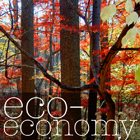
|
POPULATION, LAND, AND CONFLICT Lester R. Brown :: 14 June 2005 As land and water become scarce and as competition for these vital resources intensifies, we can expect mounting social tensions within societies, particularly between those who are poor and dispossessed and those who are wealthy, as well as among ethnic and religious groups. Population growth brings with it a steady shrinkage of life-supporting resources per person. That decline, which is threatening to drop the living standards of more and more people below survival level, could lead to unmanageable social tensions that will translate into broad-based conflicts. Worldwide, the area in grain expanded from 590 million hectares (1,457 million acres) in 1950 to its historical peak of 730 million hectares in 1981. By 2004, it had fallen to 670 million hectares. Even as the world’s population continues to grow, the area available for producing grain is shrinking. Expanding world population cut the grainland area per person in half, from 0.23 hectares (0.57 acres) in 1950 to 0.11 hectares in 2000. (See data at http://www.earth-policy.org/Books/Out/ch2data_index.htm) This area of just over one tenth of a hectare per person is half the size of a building lot in an affluent U.S. suburb. This halving of grainland area per person makes it more difficult for the world’s farmers to feed the 70 million or more people added each year. If current population projections materialize and if the overall grainland area remains constant, the area per person will shrink to 0.07 hectares in 2050, less than two thirds that in 2000. Having less cropland per person not only threatens livelihoods; in largely subsistence societies with nutrient-depleted soils, it threatens survival itself. Tensions among people begin to build as land holdings shrink below that needed for survival. The Sahelian zone of Africa, the broad swatch of the continent between the Sahara Desert and the more lush forested land to the south, which stretches from Sudan in the east through Mauritania in the west, has one of the world’s fastest-growing populations. It is also an area of spreading conflicts. In troubled Sudan, 2 million people have died and over 4 million have been displaced in the long-standing conflict of more than 20 years between the Muslim north and the Christian south. The conflict in the Darfur region in western Sudan that began in 2003 illustrates the mounting tensions between two Muslim groups—Arab camel herders and black African subsistence farmers. Government troops are backing Arab militias, who are engaging in the wholesale slaughter of black Africans in an effort to drive them off their land, sending them into refugee camps. To date, some 140,000 people have been killed in the conflict and another 250,000 have died in the refugee camps of hunger and disease. In Nigeria, where 130 million people are crammed into an area not much larger than Texas, overgrazing and overplowing are converting 351,000 hectares (1,350 square miles) of grassland and cropland into desert each year. The conflict between farmers and herders in Nigeria is a war for survival. As the New York Times reported in June 2004, “in recent years, as the desert has spread, trees have been felled and the populations of both herders and farmers have soared, the competition for land has only intensified.” Unfortunately, the division between herders and farmers is also often the division between Muslims and Christians. This competition for land, amplified by religious differences and combined with a large number of frustrated young men with guns, has created what the New York Times describes as a “combustible mix” that has “fueled a recent orgy of violence across this fertile central Nigerian state [Kebbi]. Churches and mosques were razed. Neighbor turned against neighbor. Reprisal attacks spread until finally, in mid-May, the government imposed emergency rule.” Similar divisions exist between herders and farmers in northern Mali, the Times noted, where “swords and sticks have been chucked for Kalashnikovs, as desertification and population growth have stiffened the competition between the largely black African farmers and the ethnic Tuareg and Fulani herders. Tempers are raw on both sides. The dispute, after all, is over livelihood and even more, about a way of life.” Water, too, is a source of growing tension. Although much has been said about the conflicts between and among countries over water resources, some of the most bitter disagreements are taking place within countries where needs of local populations are outrunning the sustainable yield of wells. Local water riots are becoming increasingly common in countries like China and India. In the competition between cities and the countryside, cities invariably win, often depriving farmers of their irrigation water and thus their livelihood. The projected addition to the earth’s population of 3 billion people by 2050, the vast majority of whom will be added in countries where water tables already are falling and wells are going dry, is not a recipe for economic progress and political stability. Continuing population growth in countries already overpumping their aquifers and draining their rivers dry could lead to acute hydrological poverty, a situation in which people simply do not have enough water to meet their basic needs. Reversing this situation depends on quickly slowing population growth. Otherwise the resulting political instability could soon eclipse terrorism as a threat to society. Adapted from Chapter 2 of Lester R. Brown, Originally Published online: June 14, 2005 |
||||||||||||||||||||||
|
|||||||||||||||||||||||











